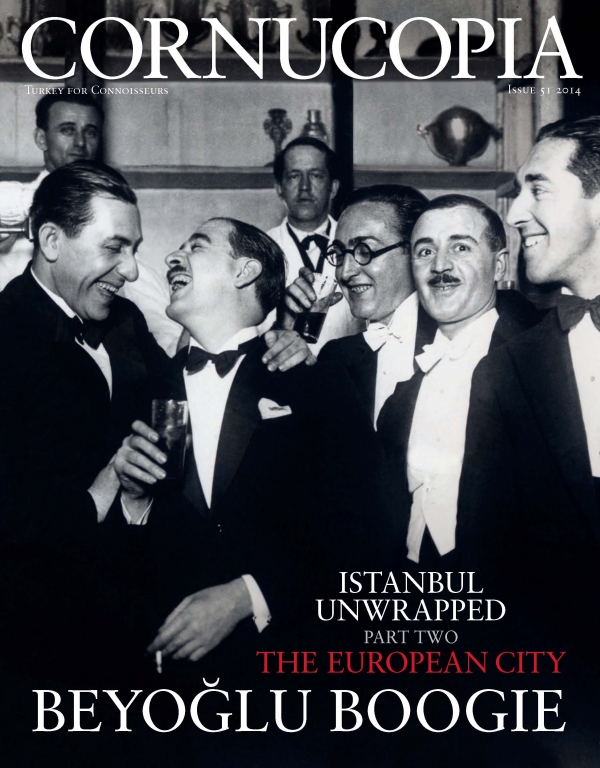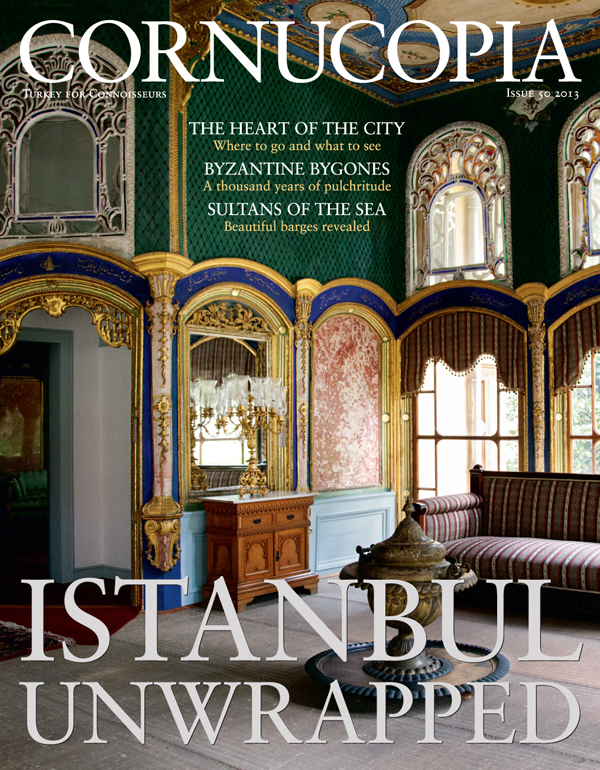Buy or gift a digital subscription and get access to the complete digital archive of every issue for just £18.99 / $23.99 / €21.99 a year.
Buy/gift a digital subscription Login to the Digital EditionArt from Florence and Amsterdam joins the work of a local court painter in Istanbul for two major international exhibitions
THE ALLURE OF THE OTTOMAN COURT
That Istanbul is hosting two large international loan exhibitions is no coincidence. It reflects, firstly, the rise of well-funded museums able to harness the power of commerce, and, secondly, the fact that foreign institutions are less wary of lending to Turkey. At the Sabancı Museum, art from Florence illustrates the intense interest that Ottoman culture held for the Medicis. And at the Topkapı a show sponsored by Koçbank returns paintings from Holland to the city where they were painted 250 years ago, exhibiting them for comparison with the work of a Turkish
VANMOUR AND LEVNI AT THE TOPKAPI PALACE
Here is a chance to see miniatures by the 18th-century Ottoman court artist Levnî side by side with paintings by his French contemporary Jean Baptiste Vanmour, who spent four decades in Istanbul and was among the first European artists to enter the Topkapı. The two lived and breathed the same air, sometimes even painting the same subjects – the palace girls on the previous page, for example. Both painted the sultan. Both painted public events: Vanmour’s picture (above left) records a wedding party walking along the Bosphorus, Levnî’s (centre and right) a circumcision fête for Ahmet III’s sons. But Vanmour was a foreign observer, while Levnî was a court insider, a gentleman rather than a craftsman, a poet, wit and raconteur. Working for three sultans, he brought new life to Ottoman art: his sitters gaze out candidly, his dancers move voluptuously. By contrast, Vanmour can be a little stiff, but he compensates with rich colours, sweeping landscapes and detailed costumes. The 49 Vanmours – lent by Amsterdam – have been glowingly restored with funding from Koçbank. Vanmour and Levnî: Paintings from the Rijksmuseum and Topkapı Palace, until April 21, 2004.
More on Vanmour in Cornucopia 30
OTTOMAN SPLENDOUR IN MEDICI FLORENCE
The first major foreign exhibition at the Sakıp Sabancı Museum is appropriately symbolic of Turkish international relations. Taken from the art collections of the Florentine palaces, it is the legacy of an intense relationship between the Ottoman sultans and the Medici and Savoy princes.
A striking painting of a Turk with a hunting dog from the Pitti Palace is one of six that became part of the Medici collection in 1691, having been painted a decade earlier. What makes this group interesting is that they show that Turkish themes were popular in Florence long before they spread to the rest of Europe. They were commissioned by Count Ferrante Capponi, who fought against the Turks, and the model may have been one of Florence’s many Turkish slaves.
The bronze and silver ‘magic bowl’ above, from the Bargello in Florence, is known to have belonged to the Medicis from at least 1746 but otherwise is something of a mystery. Decorated with letters, numbers, astrological motifs and a picture of the Kaaba, it was probably for medical purposes and may have been made in Egypt in the 17th century.
The 18th-century tile above right – also from the Bargello – is striking in that its design, while inspired by earlier Iznik examples, is simpler and bolder, with strong diagonal cloudbands. It was probably made in Istanbul in the Tekfur Palace kilns.
From the Medicis to the Savoias: Ottoman Splendour in the Florentine Palaces, Sakıp Sabancı Museum, Istanbul, till March 21, 2004
CAPA IN TURKEY IN 1946
In a little-known episode, the flamboyant war photographer Robert Capa – friend of Picasso, Hemingway and Steinbeck – spent two harsh winter months in 1946 making a documentary intended to acquaint his fellow Americans with Turkey. When not filming, he was shooting stills. This moody picture of tobacco traders (left) was part of a show of his work held in October at the Yapı Kredi Galleries in Istanbul. Capa was killed in Vietnam in 1954.
Also in Connoisseur this issue: Mrs Baldwin by Reynolds
The pictures that fired Europe’s imagination with their visions of Istanbul and the Ottoman court returned to the city for the first time in more than 250 years. Philip Mansel looks at the extraordinary paintings of Jean Baptiste Vanmour
The knobbly tubers stay fresh and crisp, and even become sweeter, if they are left in the ground; after frost and snow, they really taste like apples. Nutritionally, the tuber has valuable properties: as a diuretic, it benefits the kidneys; it stimulates the milk of nursing mothers; and it is considered a potent aphrodisiac.
More cookery features
There has been no road map in the life of Josephine Powell. As restless as the nomadic tribes she followed, she has simply let things happen. But along the way, she has become a photographer and an expert on the nomads of Turkey and their textiles. And now she dreams of a permanent home for her exceptional kilims and photographs. Andrew Finkel pays tribute to a remarkable friend
Until 1950, no travellers were permitted to cross the Euphrates. Southeast Turkey was simply out of bounds. Among the first to visit when restrictions were finally lifted was the photographer Cafer Türkmen. Travelling by train, truck, Jeep and mule, he discovered a place of dramatic beauty and a way of life barely changed for thousands of years.
The Hôtel de Lamballe was home to a doomed princess and an asylum for mad artists before it became Turkey’s embassy in Paris. Patricia Daunt reveals the turbulent past behind its serene facade. Photographs by Jean Marie del Moral
Abandoned in Greece at the end of the Ottoman Empire, the Turks of Thrace cling defiantly to their old ways. By Owen Matthews. Photographs by Ashley Gilbertson










Cornucopia works in partnership with the digital publishing platform Exact Editions to offer individual and institutional subscribers unlimited access to a searchable archive of fascinating back issues and every newly published issue. The digital edition of Cornucopia is available cross-platform on web, iOS and Android and offers a comprehensive search function, allowing the title’s cultural content to be delved into at the touch of a button.
Digital Subscription: £18.99 / $23.99 (1 year)
Subscribe now